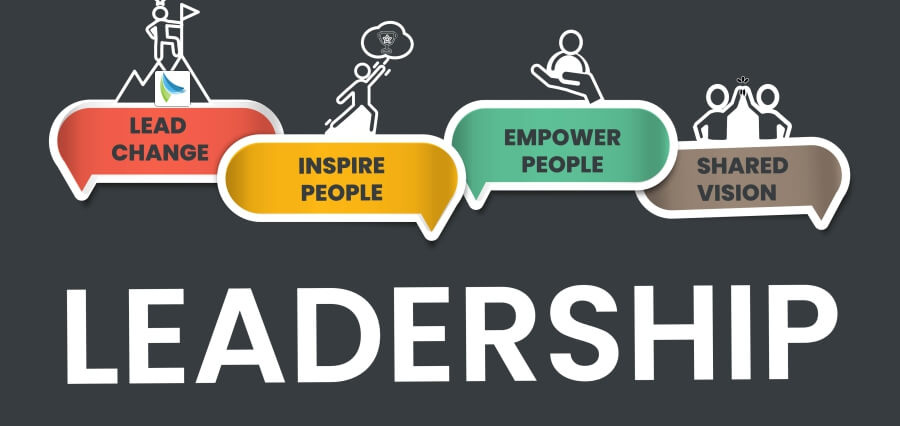From Insight to Impact
Today, a leader cannot be simply recognized through their authority, hierarchy, or control, but rather, it’s their understanding, their impact on others, and their ability to create significant change that characterize a leader. Facing the situations of fast technological change, evolving employee expectations, and challenging global problems, organizations have recognized an entirely new model of leadership; this visionary leadership based on insight. This model of management goes beyond a mere transactional approach, and through it companies gain the capacity to foster innovation, grow their customer base, and become more resilient.
Essentially, transformational leadership turns out to be not only a matter of leaders’ actions but rather their mindset, their recognition of the world around them, and the ways they utilize the insight for making a permanent difference.
The Shift from Information to Insight
Despite the fact that we are living in a time when data is plentiful, the main distinguishing factor of a leader is still insight or the capacity to make sense of the information, to notice the regularities, and to predict the consequences that others fail to see. Such leaders as transformational ones do not stop at the level of mere statistics; they engage in the research of the fundamental truths about people, markets, and the dynamics of organizations.
Insight gives leaders the tools to understand complexity, to bring together different groups around the common meaning, and to make the right moves in situations of uncertainty. Instead of trusting only their previous experiences or gut feelings, they combine the results of the data analysis with their emotional intelligence and awareness of the context.
Tomorrow’s leaders will not only be well-informed but also insightful and able to turn information into strategy and strategy into long-lasting effect.
Purpose as the Foundation of Impact
Insight without being guided by purpose might lead to the loss of direction. Transformational leaders always start with linking their idea to a clear and real purpose which is not just a fleeting profit idea but something that touches even more people. The purpose is the bond that bridges employees, stakeholders, and customers bringing together these actors through shared values and common goals.
Insight-to-purpose leaders energize others through their ability to create trust and engagement. Their calling is reflected not only in short-term operations but also in the long-lasting impact they have on people, society, and nature. Being driven by such values have the capacity to generate more innovations and also to serve as a fertile ground for the coming of persons who, through their gifts, will advance the organizational goals.
Purpose equips leadership with the moral compass needed to ensure that change is both tangible and ethical.
Emotional Intelligence: The Core of Transformational Leadership
The component which lies at the core of an insight-driven leadership is emotional intelligence, the skill to recognize, regulate, and at the same time sympathize with the feelings of other people. Transformational leaders mobilize empathy in order to establish relationships with their teams, to communicate in a truthful way, and to manage conflicts with ease.
During unsettling or transformative periods, emotional intelligence turns into the support that keeps up the spirits and the unites the team. Leaders who embody self-awareness and empathy are capable of creating an environment of psychological safety which in turn helps the engagement of creativity and collaboration. Such a focus on the human aspect is what makes the ride-transformational-approach, the culture-defense, or just the culture-advantage, possible to accomplish from within.
Emotional intelligence converts insight into influence, and influence into impact.
The Role of Adaptability and Continuous Learning
Transformational leadership is like the phoenix which makes its existence known only in highly volatile situations. The top leaders of the world are not the ones who stubbornly resist the tide of change but the ones who respond to it with flexible manner and an attitude of inquiry. They treat the very idea of disruption as an opening for learning, growing, and innovating rather than seeing it as a risk.
With unending learning, leaders can constantly change their standpoints and not become obsolete. By doing so, leaders may even lead the way in the rapid uptake of innovations by revealing how new technologies, unearthing new value chain models, or critically re-examining old assumptions present burning issues to business growth.
Such a leader’s openness to change also involves granting permission to their teams to take risks, learn from their failures, and evolve collectively. Such organizations, which are under the leadership of such leaders, become increasingly stronger and more prepared for the future.
Conclusion
The transformational leadership map has metamorphosed. It no longer revolves around one’s commanding authority or the strict enforcement of compliance but rather, it is concerned with connecting insight with purpose and, subsequently, turning that connection into a sustained impact.
Such leaders show this new model by mixing it with the human side of things, they are rational in their decisions, empathetic in their actions, and have both a long-term vision combined with their ability to act immediately. They pioneer organizations that are adaptable, creative, and robust – which on the one hand, can flourish in complicated situations and, on the other hand, can contribute to making the world a better place. Transformational leaders, thus, are the ones who make the journey from insight to impact.











